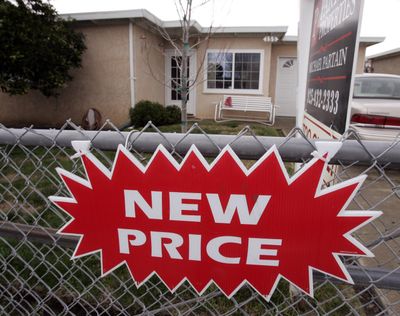Correct pricing early on is essential to attracting showings, offers on home

When you’re selling a home, getting the listing price correct from the start is essential.
The initial price is sort of like curb appeal. It’s a first impression that can help ensure the successful sale of a home, or it can chase buyers away.
“I tell my clients, ‘The parade only comes by once,’ said Tom Hormel, a broker with Re/Max Inland Empire. “Right now, there’s a huge pent-up supply of buyers. When a home hits the market, they all rush out to look at it. If it’s not priced correctly, they’ll move on to the next house.”
Sellers, of course, don’t want to price their home too low. But that’s less of a concern in the current market, real estate agents said.
Inventories of homes for sale are low right now in the Spokane area, with about 500 fewer houses on the market compared to this time last year. Competitively priced homes are drawing full-price offers, multiple offers and even offers above the list price, agents said.
“If you’re over priced, you never get that opportunity to create a bidding war on the property,” Hormel said.
Here’s another way to look at it, said Margo Wheeler Willis, president of Washington Realtors, a 19,000-member trade association.
When homes are priced correctly, “you’ll get very serious buyers looking at it, and agents will be anxious to show it,” she said.
But the opposite is also true, she said. Overpriced homes don’t attract offers. And if a house has been on the market for more than 30 days, prospective buyers and agents start to get suspicious. They wonder if something is wrong with the property, and they are less motivated to look at it.
How do sellers arrive at the correct listing price? That’s a matter of supply and demand, with some intuition thrown in, agents say.
“I do a market analysis on every home, but right now, the analysis is a little more difficult because homes are selling above the listing price,” Hormel said.
Agents look at comparable sales and current listings in the neighborhood to help sellers price their homes. The information provides a guide to what properties with similar square footage and amentities have sold for in the past, and what sellers are currently asking. Agents also look at how long it took the homes to sell.
Ideally, the list should compare houses of similar age.
Hormel pulls comparable sales in the neighborhood for the past year, charting them by quarter. That way, his clients have a trend line of where the market is headed.
“It helps me get ahead of the market,” he said.
The current trend of rising prices is “sure a lot nicer than 2008 to 2010, when I was showing clients a trend line going down,” he said.
In addition to the weekly market analysis, Chapman Real Estate also pays attention to information gleaned from phone calls, showings and Internet traffic, said Matt Chapman, managing broker.
“It’s not an exact science, but it’s about having as many tools at your disposal as possible,” he said.
Once their home is on the market, sellers need to stay on top of what’s happening. If their home isn’t attracting interest, they need to act quickly.
“I talk to my clients every week,” Hormel said. “If we’ve gone two weeks and we haven’t had any showings, or we’ve had 10 showings and no offers, something is wrong.”
It’s better to adjust the price early, than to have a property miss out on showings during the peak season for home shopping, agents said.
“If it’s well priced and in good condition, a house won’t last 30 days in this market,” Wheeler Willis said.